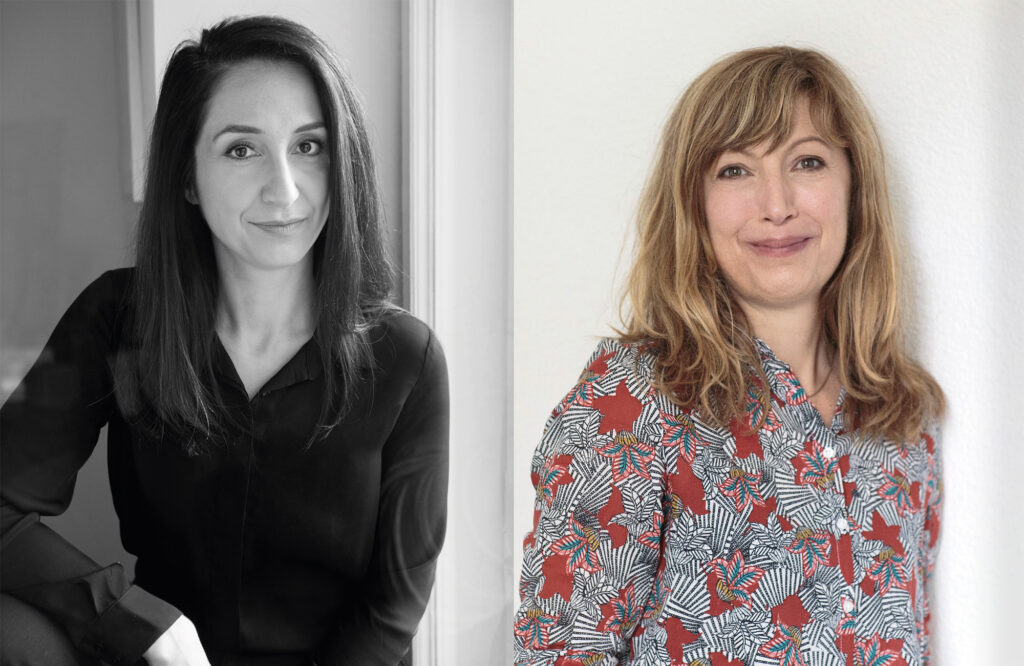Jury view: Interview with Aslı Özarslan and Nicole Borgeat
Aslı Özarslan and Nicole Borgeat have joined the Story Lab jury this year and provide insights into their first jury session.
What was your first jury meeting like?
Nicole Borgeat:
I have to admit that I was a bit scared, because sitting on a jury is a big responsibility in my eyes. I myself submit many projects to commissions every year and I know that it is never easy to accept a rejection. I appreciated the quality of listening among the jury members – we are very different – and the fact that everyone was able to develop their position at certain times by listening to the others. I also noticed that attention was paid to diversity and inclusion – a requirement that I have never seen so clearly anywhere else.
Aslı Özarslan:
Challenging because there were many projects that had to be read and evaluated. Especially when I had to choose between two good projects. That brought me back to the question: What does a good film need for me? And can I find that in the description of the project? I could and had to rely on the text available to me, which wasn’t always easy. I thought it was good that the projects were anonymised and that we were not influenced by this. I hadn’t seen this before, but I realised that it was helpful.
What did you notice about the selected projects, what do you find important?
Aslı Özarslan:
I was impressed when I felt the heart and soul in the project. That the people who wanted to realise it would realise it even if they hadn’t received funding. In turn, I wanted to see these projects realised with our funding. I didn’t feel that with other projects. Of course, this is a subjective impression and doesn’t necessarily mean anything, but I had to rely on something, and that was my intuition. I had to be able to abstract again and again, even if the text was less well written.
Nicole Borgeat:
ENTHOUSIASMANTS!!! I really want these unique projects to develop and I’m looking forward to seeing them on the big screen.
How would you describe the perspective you bring to the jury?
Nicole Borgeat:
I’m a screenwriter and director, so I have a stronger focus on narrative than anything else, because that’s the muscle I exercise every day. But I work a lot to my heart’s content, I choose the projects I’d like to see and the ones where I feel a kind of passion and necessity.
Aslı Özarslan:
That’s a difficult question. As I am a documentary and feature film director, I have gained an insight into both ways of shooting and in this respect I can perhaps understand or categorise certain ideas well. But I’ve also learnt a lot from the authors who have submitted films.
Was it difficult to evaluate the projects anonymously?
Nicole Borgeat:
I was initially against the idea of anonymous evaluation because I was convinced that no project exists in itself, regardless of the author who carries it. But when I joined the Story Lab and evaluated projects in this way myself, I changed my perspective. It is indeed very pleasant to judge a project for what it is, uninfluenced by previous career or achievements. This gives newcomers the same opportunity as experienced project organisers. And if a project isn’t convincing, you don’t feel tormented by the thought that you may have overlooked something because of the CV of the person who submitted it. It’s a real relief to be part of a process that aims to be as egalitarian as possible.
Aslı Özarslan:
There were a few projects where I would have liked to have known a bit more background information. So to all submitters: Dare to write in if you are making films for the first time, or if you are aiming for a social project in which non-professionals are supposed to shoot, etc. Just assuming this is not enough given the large number of applications and leaves you with questions. Otherwise I thought the anonymisation was very good!
Was there anything that took you by surprise?
Nicole Borgeat:
I was impressed by the friendliness and commitment of the Story Lab team, who are present at the consultations without interfering in the decisions. They have a genuine love for creative work and a real respect for the authors.
Aslı Özarslan:
I always find it surprising how some projects are all unanimously considered worthy of support and others we have completely divergent opinions on. The discussions between the jury members were always on an equal footing, everyone always fought for ‘their’ projects. And that was fun.

Aslı Özarslan (on the left) and Nicole Borgeat